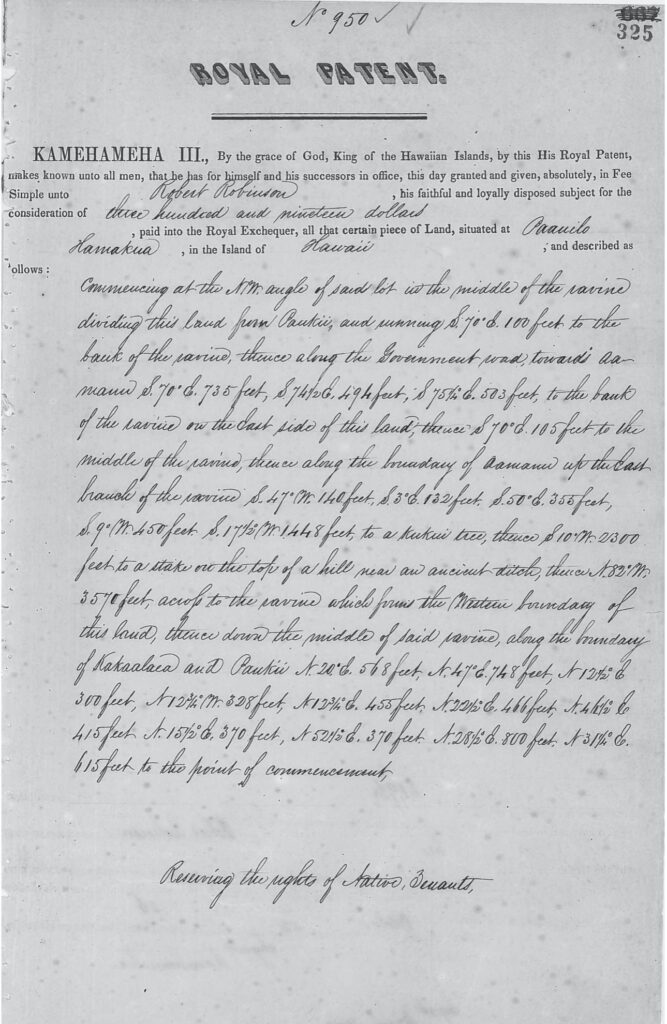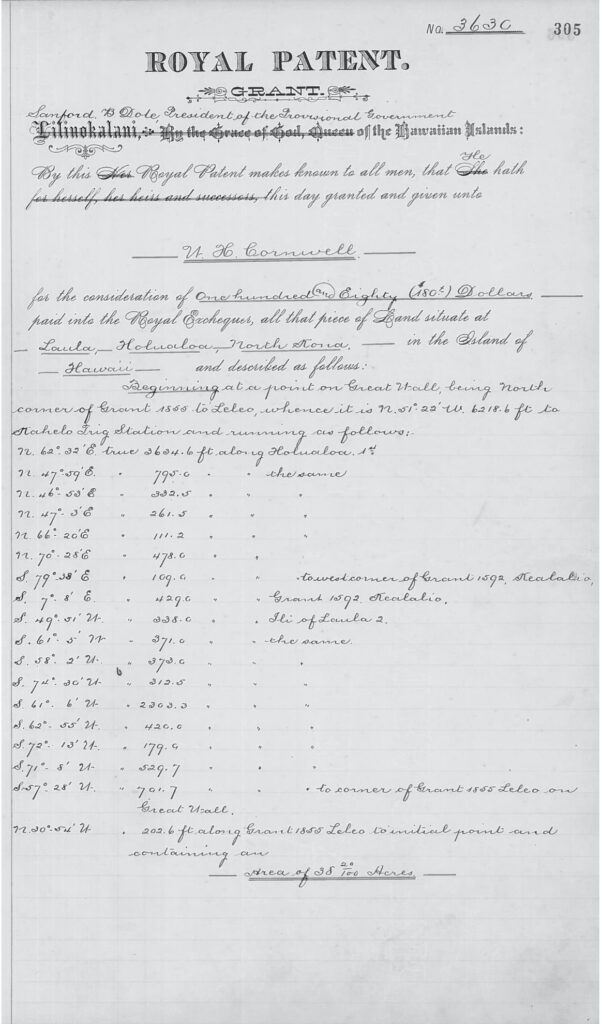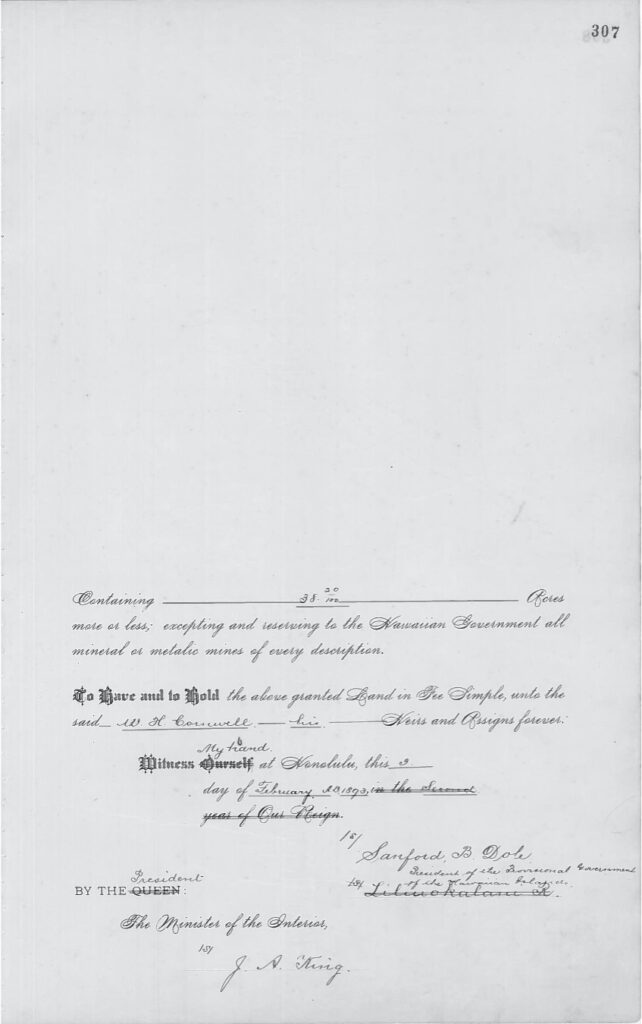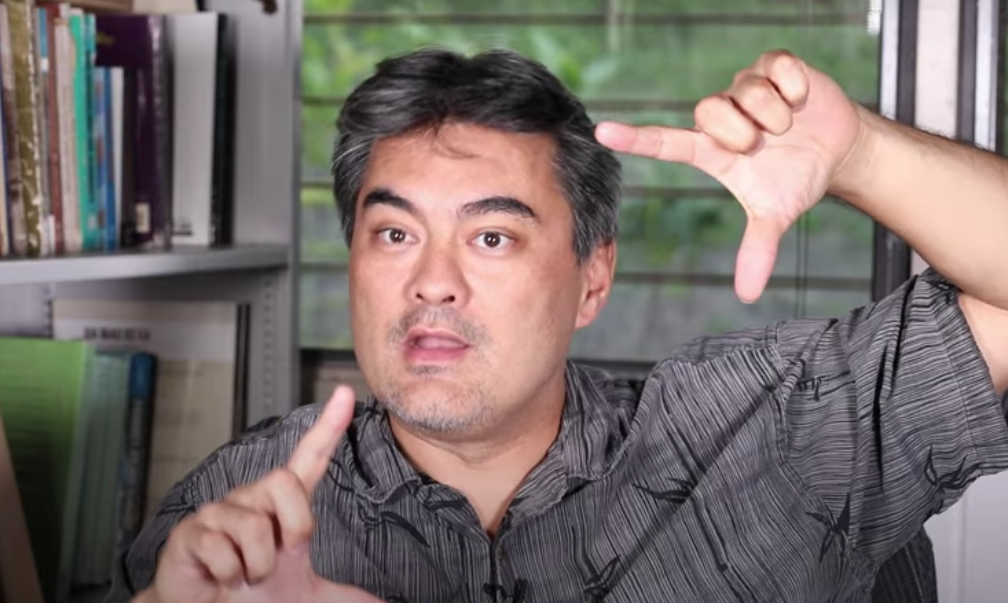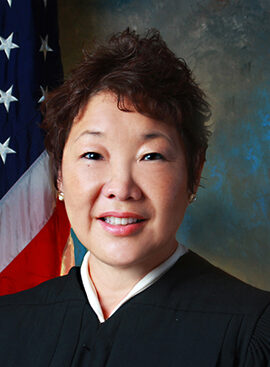During this time of the rising of the national consciousness of the Hawaiian Kingdom after over a century of the war crime of denationalization through Americanization, it is important for Hawaiian subjects to understand the laws of the country as they existed prior to the overthrow of the Hawaiian Kingdom government on January 17, 1893. Especially the laws that apply to the Hawaiian Crown.
There is a common misunderstanding that the Hawaiian Crown is hereditary. This is not an accurate understanding of Hawaiian constitutional law. Hereditary descent is a part of Hawaiian law, but it works in tandem and within the limits of Hawaiian constitutional law.
Individuals claiming Hawaiian Titles of Nobility, which include Abigail Kawananakoa, Owana Salazar, Mahealani Ahsing, Windy Lorenzo, Ruth Bolomet, just to name a few, are not who they claim. There is a distinction between Titles of Nobility and noble lineage. The former derives from a sitting Monarch, while the latter is a status by virtue of chiefly genealogy called mo‘o ku‘auhau. This is not to say that these individuals are not of noble lineage. Rather the titles they claim are self-declared that have no basis under Hawaiian constitutional law.
Only a sitting Monarch can nominate an heir apparent to the Throne, which will then require confirmation by the Nobles in the Legislative Assembly. The history of Hawaiian Monarchs began with the Kamehameha Dynasty that ended in 1873, followed by the Lunalilo Dynasty that ended in 1874, and then finally the Kalākaua Dynasty that ended in 1922.
In the latter part of the eighteenth century, the northern archipelago of islands consisted of four distinct kingdoms: Hawai‘i Island under Kamehameha I; Maui Island with its dependent islands of Lāna‘i and Kaho‘olawe under Kahekili; Kaua‘i Islalnd and its dependent island of Ni‘ihau under Kā‘eo; and O‘ahu Island with its dependent island of Molokaʻi under Kahahana. Kamehameha, King of Hawai‘i Island, consolidated the four kingdoms establishing the Kingdom of the Sandwich Islands in 1810, which later became the Kingdom of the Hawaiian Islands. In 1829, the Kingdom of the Sandwich Islands came to be known as the Kingdom of the Hawaiian Islands. By 1840, the Kingdom of the Hawaiian Islands came to be known as the Hawaiian Kingdom, a constitutional monarchy.
The Kamehameha Dynasty
Kamehameha I governed his kingdom according to ancient tradition and strict religious protocol. In 1794, after voluntarily ceding the island Kingdom of Hawai‘i to Great Britain, Kamehameha and his chiefs considered themselves British subjects and recognized King George III as emperor. The cession to Great Britain did not radically change traditional governance, but principles of English governance and titles were instituted.
In 1795, Kamehameha conquered the Maui Kingdom, and in 1810 the Kaua‘i Kingdom became a vassal under Kamehameha through voluntary cession by its King, Kaumuali‘i. By 1840 all the Island Kingdoms were consolidated under the Hawaiian Kingdom. According to the 1840 Constitution:
The origin of the present government, and system of polity, is as follows: KAMEHAMEHA I, was the founder of the kingdom, and to him belonged all the land from one end of the Islands to the other, though it was not his own private property. It belonged to the chiefs and people in common, of whom Kamehameha I was the head, and had the management of the landed property. Wherefore, there was not formerly, and is not now any person who could or can convey away the smallest portion of land without consent of the one who had, or has the direction of the kingdom.
These are the persons who have had the direction of it from that time down, Kamehameha II, Kaahumanu I, and at the present time Kamehameha III. These persons have had the direction of the kingdom down to the present time, and all documents written by them, and no others are the documents of the kingdom.
The kingdom is permanently confirmed to Kamehameha III, and his heirs, and his heir shall be the person whom he and the chiefs shall appoint, during his life time, but should there be no appointment, then the decision shall rest with the chiefs and house of Representatives.
On June 14, 1852, a new Constitution was granted by Kamehameha III confirming the successorship of the Crown. Article 25 provides:
The crown is hereby permanently confirmed to His Majesty Kamehameha III during his life, and to his successor. The successor shall be the person whom the King and the House of Nobles shall appoint and publicly proclaim as such, during the King’s life; but should there be no such appointment and proclamation, then the successor shall be chosen by the House of Nobles and the House of Representatives in joint ballot.
Article 25 is tempered by Article 26 that states, “No person shall ever sit upon the throne who has been convicted of an infamous crime, or who is insane or an idiot. No person shall ever succeed to the crown, unless he be a descendant of the aboriginal stock of Aliʻis.” It would appear that Kamehameha III was aware of King George III’s insanity while the Hawaiian Kingdom was a British Protectorate and it no doubt informed Hawaiian governance.
Alexander Liholiho, the adopted son of the King, was confirmed by the House of Nobles as successor on April 6, 1853, in accordance with Article 25 of the 1852 Constitution. In 1854, after the death of the King, he succeeded to the throne as Kamehameha IV. Kamehameha IV was the biological son of Mataio Kekuūanaoʻa and Kīnaʻu, who was the half-sister to Kamehameha III. The confirmation process ensured that Alexander Liholiho was not “convicted of an infamous crime, or who is insane or an idiot.”
On November 30, 1863, Kamehameha IV died unexpectedly, and left the Kingdom without a successor. On the same day, the Kuhina Nui—Premier, Victoria Kamāmalu, in Privy Council, proclaimed Lot Kapuaiwa to be the successor to the throne in accordance with Article 25 of the Constitution of 1852, and the Nobles confirmed him. Lot Kapuaiwa was thereafter called Kamehameha V. Victoria Kamāmalu, as Kuhina Nui, provided continuity for the office of the Crown pending the appointment and confirmation of Lot Kapuaiwa.
Article 47, of the 1852 Constitution provided that “whenever the throne shall become vacant by reason of the King’s death the Kuhina Nui shall perform all the duties incumbent on the King, and shall have and exercise all the powers, which by this Constitution are vested in the King.” This provision prevented the House of Nobles and the House of Representives to choose a successor by joint ballot.
On August 20, 1864, Kamehameha V proclaimed the 1864 Constitution. The office of Kuhina Nui—Premier was removed and replaced by the Cabinet Council. Article 22 provided the successorship of the Hawaiian Crown:
The Crown is hereby permanently confirmed to His Majesty Kamehameha V, and to the Heirs of His body lawfully begotten, and to their lawful Descendants in a direct line; failing whom, the Crown shall descend to Her Royal Highness the Princess Victoria Kamamalu Kaahumanu, and their heirs of her body, lawfully begotten, and their lawful descendants in a direct line. The Succession shall be to the senior male child, and to the heirs of his body; failing a male child, the succession shall be to the senior female child, and the heirs of her body. In case there is no heir as above provided, then the successor shall be the person whom the Sovereign shall appoint wiht the consent of the Nobles, and publicly proclaim as such during the King’s life; but should there be no appointment and proclamation, and the Throne should become vacant, then the Cabinet Council, immediately after the occurring of such vacancy, shall cause a meeting of the Legislative Assembly, who shall elect by ballot some native Aliʻi of the Kingdom as Successor to the Throne; and the Successor so elected shall become a new Stirps for a Royal Family; and the succession from the Sovereign thus elected, shall be regulated by the same law as the present Royal Family.
The constraints upon the Crown was reiterated in Article 25, which stated, “No person shall ever sit upon the Throne, who has been convicted of any infamous crime, or who is insane, or an idiot.”
On December 11, 1872, Kamehameha V died without naming a successor to the throne. This caused the Cabinet Council to serve temporarily as a Council of Regency that serves in the absence of a Monarch. According to Article 22 of the 1864 Constitution, “the Cabinet Council, immediately after the occurring of such vacancy, shall cause a meeting of the Legislative Assembly, who shall elect by ballot some native Aliʻi of the Kingdom as Successor to the Throne.” Article 33 also provides that “the Cabinet Council at the time of such decease shall be a Council of Regency, until the Legislative Assembly, which shall be called immediately, may be assembled.”
The Lunalilo Dynasty
On January 8, 1873, the Cabinet serving as a Council of Regency convened the Legislative Assembly into Extraordinary Session. In its address to the Legislature, the Cabinet stated:
Documents delivered to your President, contain official evidence of the decease of His late Majesty Kamehameha V. His earthly existence terminated at Iolani Palace, in Honolulu, in the Island of Oahu, upon the forty-second anniversary of his birth, being the eleventh day of December, in the year of Our Lord One Thousand Eight Hundred and Seventy-two.
His Majesty left no Heirs.
Her late Royal Highness the Princess Victoria Kamamalu Kaahumanu, to whom in the event of the death of His late Majesty without heirs, the Constitution declared that the Throne should descend, died, also without heirs, on the twenty-ninth day of May, in the year of Our Lord One Thousand Eight Hundred and Sixty-six.
His late Majesty did not appoint any successor in the mode set forth in the Constitution, with the consent of the Nobles or make a Proclamation thereof during his life. There having been no such appointment or Proclamation, the Throne became vacant, and the Cabinet Council immediately thereupon considered the form of the Constitution in such case made and provided, and
Ordered—That a meeting of the Legislative Assembly be caused to be holden at the Court House in Honolulu, on Wednesday which will be the eighth day of January, A.D. 1873, at 12 o’clock noon; and of this order all Members of the Legislative Assembly will take notice and govern themselves accordingly.
By virtue of this Order you have been assembled, to elect by ballot, some native Aliʻi of this Kingdom as Successor to the Throne. Your present authority is limited to this duty, but the newly elected Sovereign may require your services after his accession.
The Members of the Cabinet Council devoutly ask the blessings of Heaven upon your deliberations and public acts. They have appreciated the responsibility resting upon them, and have striven to maintain tranquility and order, and, especially, to guard your proceedings against improper interference.
Acknowledging the obligation to preserve all the rights, honors and dignities appertaining to the Throne, and to transmit them unimpaired to a new Sovereign, it will become their duty, upon his accession, to surrender to him the authority conferred upon them by his late lamented predecessor.
The Legislative Assembly, empowered to elect a new monarch under the 1864 Constitution, elected William Charles Lunalilo on January 8, 1873. Lunalilo was not a descendant of Kamehameha I but his mother, Kekāuluohi, was the Queen Consort to Kamehameha I and Kamehameha II. His father was High Chief Charles Kana‘ina.
The Kalākaua Dynasty
The Hawaiian Kingdom’s first elected King died a year later without a named successor, and the Legislature was again convened by Lunaliloʻs Cabinet Council and elected David Kalākaua as King on February 12, 1874. On February 14, 1874, King Kalākaua appointed his younger brother, Prince William Pitt Leleiōhoku, his successor, and was confirmed by the Nobles. On April 10, 1877, Leleiōhoku died. The next day Kalākaua appointed his sister, Princess Lili‘uokalani, as heir-apparent and received confirmation from the Nobles.
When Kalākaua was elected, a new royal lineage replaced the Kamehameha and Lunalilo Dynasty. Kalākaua declared royal titles upon: Princess Lili‘uokalani, Queen Kapiʻolani, Princess Virginia Kapoʻoloku Poʻomaikelani, Princess Kinoiki, Princess Victoria Kawekiu Kaiʻulani Lunalilo Kalaninuiahilapalapa, Prince David Kawānanakoa, Prince Edward Abner Keliʻiahonui, and Prince Jonah Kūhiō Kalanianaʻole comprised the new royal lineage. Everyone with the exception of Princess Lili‘uokalani, as heir-apparent, were heirs to the Hawaiian Throne. To move from an heir to heir-apparent is when the Monarch nominates you as successor among the other heirs, and the nominee receives confirmation from the Nobles.
When Kalākaua embarked on his world tour on January 20, 1881, Princess Lili‘uokalani served as Regent, together with the Cabinet Council. Her second time to serve as Regent with the Cabinet Council occurred when Kalākaua departed for San Francisco on November 25, 1890. Kalākaua died in San Francisco on January 20, 1891, and his body returned to Honolulu on the 29th. That day Princess Liliʻuokalani succeeded to the Throne.
The legislative and judicial branches of government had been compromised by the revolt in 1887. The Nobles became an elected body of men whose allegiance was to the foreign population, and three of the justices of the Supreme Court, including the Chief Justice, participated in the revolt by drafting the 1887 constitution. The Queen was prevented from legally confirming her niece, Victoria Kawekiu Kaiʻulani Lunalilo Kalaninuiahilapalapa, as heir-apparent, because the Nobles had not been in the Legislative Assembly since 1887. Ka‘iulani died at the age of 23 on March 6, 1899.
Up to her death on November 11, 1917, Lili‘uokalani was prevented from naming a successor to the Throne and receiving confirmation by the Nobles. The last of the Kalākaua Dynasty to die was Prince Jonah Kūhiō Kalanianaʻole on January 7, 1922, which ended the Kalākaua Dynasty. Royal titles are not inheriteable.
The Kamehameha, Lunalilo and Kalākaua Dynasties came to a close. There are no heirs to the Throne, and the Legislative Assembly will have to be reconvened, by the Council of Regency, after the occupation comes to an end to “elect by ballot some native Aliʻi of the Kingdom as Successor to the Throne.” A “native Aliʻi” will be drawn from those who are a direct descendant of the genealogies provided by the Board of Genealogists that were published in 1896 in the Ka Maka‘ainana newspaper. To access these genealogies go to The Three Estates of the Hawaiian Kingdom.
Direct descendants of these genealogies comprise the Nobility class of the Hawaiian Kingdom and would be qualified to be elected by the Legislative Assembly after the Nobles determine that the candidate has not “been convicted of any infamous crime, or who is insane, or an idiot.”
Until such time the Council of Regency serves in the absence of the Monarch.

